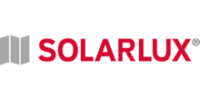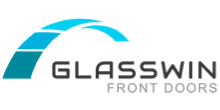AMA Research have published the 9th edition of the ‘Commercial Glazing Market Report – UK 2015–2019 Analysis’.
AMA Research are well established publishers of Market reports, databases and bulletins for construction and building. In addition they can be employed to carry out individual research projects such as commissioned market research projects and consumer or business surveys.
The commercial glazing market continues to grow.

AMA have produced the Commercial Glazing Market Report that analyses all the sectors within the commercial glazing market. In their 2015 report, AMA Research looked at market size & trends, key market influences, forecasts to 2019.
It is well known that commercial windows, doors, curtain walling and shopfront/ground floor treatment systems form the majority of commercial glazing work. Recently there has also been an increase in roof glazing as well.
Some of the best known names in architectural aluminium are included in the report. From established systems companies such as AluK, Schuco, Smarts and SAPA. There is further reference to other specialist companies that are in the market to provide bespoke facade and high rise glazing systems such as Alumet, Charles Henshaw and Sons, English Architectural Glazing and others.
The report delves even deeper to include companies that work in the commercial glazing sector in related fields such as DORMA, Boon Edam, GEZE, ASSA Abloy, Dortech, Ingersoll Rand and AWS. Glass providers such as Pilkington and Solaglas are also included. PVCu companies such as LB Plastics are also analysed in the report.
What constitutes commercial glazing works?

The commercial glazing sector is vast. It is easy to assume that education, commercial offices, retail and healthcare are typical examples. But high rise residential developments of flats and apartments as well as housing developments also fall under commercial construction.
Each of these sectors have had fluctuating levels of growth in recent years. The education sector as one example whilst no longer as buoyant under the Building Schools for the Future (BSF) programme still has construction work ongoing.
The Priority Schools Building Programme (PSBP) is the replacement for the BSF for England. There is currently over £2bn of work scheduled under this programme over the coming two years. Aside from this there is ongoing demand for renewed student accommodation. It is common to see many student blocks being constructed in major university towns and cities.
Office building continues to be dominant in major cities and towns. Retail parks are being constructed as more leisure and shopping destinations have been constructed.
Even local councils are undertaking works to revamp town centres.
The above all means that there will be a huge demand for aluminium window and door systems and facade glazing. For the commercial sector and aluminium systems companies working hard in the specification sector, this is great news.
In London especially there is ongoing development of high rise residential buildings. This will be a huge growth area for aluminium products such as windows, doors and curtain walling. Design is now focusing on providing some external space to high rise dwellings so residential doors and patio doors should be popular here.
AMA Research Report Positive Growth.
AMA Research say:
The commercial glazing market saw a modest increase in 2013, and significant growth in 2014 appears to have been sustained and improved upon in 2015 with prospects for growth in the market over the next 4–5 years looking positive. Following a period of decline between 2008 and 2011, the market began to stabilise from 2011 onwards, due to improving conditions in the Central London office construction sector, education and leisure construction sectors. Growth in 2014–2015 has been mainly stimulated by increasing demand in the office construction sector and in H2 2015, there are signs of growing demand for new Grade A office space in London and certain other cities – e.g. Leeds and Birmingham – which is likely to stimulate growth for commercial windows and curtain wall from 2016 onwards.
So what about the demand for aluminium systems?
AMA say in their report that that the largest segment by value is commercial windows, followed by Curtain wall and ground floor treatments.
This is to be accepted given that a building will have more windows than doors, modern buildings have a lot of curtain walling as well. The ground floor treatments (shopfronts and screens) is also logical as planners today look to provide commercial units below residential blocks.
Aluminium remains the dominant frame material.
There is no getting away from the fact that aluminium for decades has been the dominant frame material in the commercial glazing market. However the report rightly states that PVCu, timber and composite products also have a share of the market. They also have their own particular strengths. We must remember that certain buildings are required to imitate traditional surrounds therefore timber or hybrid windows would be ideal here.
Who is the dominant player in commercial glazing?

AMA Research say that:
Among the systems companies, the market has remained fragmented with no truly dominant suppliers. In the aluminium systems supply sector, there appears to be a decreasing level of market concentration with the 10 largest accounting for ~90% of this market. However, the reduced level of activity in the commercial glazing market in 2012–2013 led to a significant contraction among fabricators and installers with several players ceasing trading.
This we believe has largely been the case for many years already. All systems companies are very active in the specification sector with no one company being dominant. There are some that are largely active in the commercial building sector rather than having residential systems as well. Having said that companies such as Metal Technology, Kawneer and Technal are very active in the construction of new build homes and apartments. So it can be construed that commercial windows are being installed in dwellings.
The report also states that for bespoke cladding and facade glazing, the choice is to employ European Contractors. There are many iconic buildings in central London for example the Shard, that did not employ British facade installers. Even residential blocks such as the Chatham Maritime Complex had the curtain waling to all the apartments installed by a Swedish firm.
We know that many Chinese companies have also installed facades in the UK for major commercial contracts.
Its good news for aluminium windows and doors.
The AMA Research Report highlights again the ongoing popularity of aluminium for windows and doors. So whilst residentially the bifolding door may be the dominant product in aluminium, commercially you’ll find it is a whole range of products.










